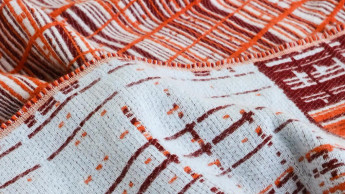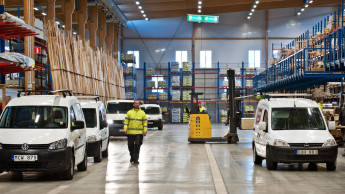The emphasis is still on ergonomics, functionality of design, greater user convenience and improved performance when it comes to innovations in the tools sector
Especially in the DIY category, the focus is once more on making versatile hand tools that are suitable for a variety of operations. Evidence of this trend is provided by coping saws, which can be converted quickly and easily into either sickle or pad saws.
The demand for tools that will simply and securely fasten workpieces has led to the development of complete clamping systems, which provide a great number of individual components that can be combined in a variety of configurations, so offering true multifunctional flexibility. This is also provided by clamps that can be used with one hand. Here just one turn of a knob is sufficient to convert the tool from a clamp to an expander. Spring clamps with a fully adjustable opening capacity are yet another example of a tool that is designed to be suitable for almost any job.
Lithium makes life easier
Innovative concepts that are capable of delivering improved effectiveness and ease of use are in demand when it comes to rechargeable tools. These include the adaptation of lithium ion technology to rechargeable power tools. Mainly used in mobile phones and digital cameras until now, these energy carriers also have many advantages to offer skilled tradesmen and DIYers when working with cordless power tools. Lithium ion batteries are small but offer an extremely good power output and hardly lose their charge when not in use. Since they have no memory effect, the charging process can be interrupted, and then resumed at any time. Their use offers yet another positive advantage: more compact power tools can be designed, leading to easier handling.
Precision-gauged power
The trend towards an ever higher power output has reached the point where many corded power tools increasingly require a means of reducing the wattage produced by the tool. For instance, heavy hammer drills and chisel hammers with multistage overload clutches can apply just the amount of power calculated for the job on hand.
Modern processes, often adapted from industrial applications, are increasingly turning conventional power saws into precision tools. Laser technology for projecting exact cutting lines onto the workpiece is no longer to be found only on professional stationary panel saws and mitre-cutting saws but is also quickly becoming a feature of hand-operated saws used by DIYers.
Compactly designed and easily handled multifunctional tools, some of them even featuring flexible gel components, are making light work of all the grinding and cleaning jobs in the home, garage, workshop and garden. And built-in lights ensure an exact overview of the surface being sanded, even when conditions are really too dim to work in.
Exact results
A subject that is currently big and promises great potential is the laser-, ultrasound and electronically assisted technology for measuring, marking and detecting the position of objects. These easy to operate and precise devices will not totally remove the tried and tested methods using measuring tapes, spirit levels, plumb lines and chalk lines from the market. However, besides providing professional users – and growing numbers of DIYers – with precise measurements, they also deliver a whole range of work- and time-saving advantages in one-person operation.
Professional-level precision
A fast workflow and precise results together with the longest possible service life are the most important attributes for machine tools. And so bit drilling attachments specially developed for today’s cordless impact drivers and screwdrivers save users the time needed for switching over to mains-powered hammer drills. Special bits featuring serrated peripheral cutting edges with a wave profile work in stationary as well as hand-held drills, and will drill much faster through softwoods, hardwoods, chipboard or MDF panels. The right combinations of tap drills and precisely matched taps for cutting threads ensure the smooth, efficient production of threads in one-off jobs or small series.
Download:

 Menü
Menü
















